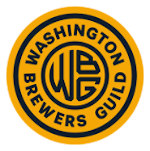Not so much about liquor, but more about the need to offer something “other.”
About a month ago, North Jetty Brewing made an announcement on Facebook: “Reminder we can no longer allow outside food due to our new full restaurant license…” The seaside brewery and taproom in the town of Seaview, Washington decided to expand and build its own kitchen and start offering its own food. No big deal, right? But wait, there’s more. And that more is what I want to address. (Pictures above from Instagram.)
In Washington, adding a kitchen to North Jetty Brewing’s taproom did not necessarily require a restaurant license; however, adding liquor to the menu certainly did. As of February 20th, North Jetty Brewing is serving cocktails and food alongside its house-brewed beers.
First up, adding food to the menu at its taproom creates a new revenue stream for the business, though it also introduces some complexity and involves some risk. Second, and perhaps more importantly, adding liquor to the menu shows that the brewery recognizes a new reality in the world of beer. Not everyone drinks beer, and even those who drink beer don’t always drink beer. It is a new, unavoidable truth.
Once upon a time, alcohol consumers most often fit into one of three categories. A person drank beer, wine, or liquor nearly exclusively. That does not describe the modern tippler. They’re more likely to mix it up. Also, they’re more likely to not drink beer at all. This is not conjecture on my part. What I say is backed by research from organizations like Gallup and Statista, trusted companies that quantify consumer trends. I won’t bore you with all the details, you can google it yourself, but check this out. From Statista:

- In 2000, 56% of drinkers said they usually drink beer and 29% said they usually drink spirits.
- In 2022, 42% said they usually drink beer and 42% said they usually drink spirits.
- Across that period, wine stayed pretty steady, averaging around 16%.
On top of that, recent years have witnessed the introduction of other alcoholic beverages. Seltzer, kombucha, hard agave, and those kinds of products help to further distract consumers away from beer. Although the numbers from Statista are worth consideration, we shouldn’t ignore the advent of these kinds of “other” beverages.
The Rise of the Brewery Taproom
It may sound like bad news for beer, but there is a bright side to consider. Over that same period, from 2000 through 2022, an entirely new kind of drinking experience was born. Namely, craft beer and the brewery taproom.
The act of visiting a brewery taproom is wholly new. It did not exist 20 years ago. Now, it’s an increasingly popular activity. It is not confined to traditional craft beer hotbeds like Seattle, Portland, and Denver. The proliferation of brewery taprooms is a nationwide trend. There are several reasons why it has become a familiar activity, and that’s a different topic, but beer is not the only reason brewery taprooms are now such popular places to imbibe.
Alas, not everyone drinks beer and not everyone who drinks beer wants to drink it all the time. If a group of four people is headed out for some Saturday socialization, and one of them simply does not drink beer, they may choose to do something other than visit a brewery taproom. To attract the three people who want to drink beer, the brewery taproom must consider the one who does not.
About the “Other”
People are looking for a real, honest product when they visit a brewery taproom, whether it is beer or something other. A brewery should extend its passion, creativity, and local-maker ethos to everything it does, and that includes its non-beer offerings. What a brewery taproom is allowed to offer, and what the local and state jurisdictions allow, varies. Each business is unique and so is each path forward, but forward we must go.
A brewery cares a lot about the quality of the beer it provides its customers. It should care equally about the other things it offers at its taproom.
There’s nothing wrong with a brewery taproom deciding to offer its guests something other than its own house-brewed beers, but it should be done with intention. Whether it is wine, cider, kombucha, seltzer, or cocktails it should reflect the same level of thought as the beer. Ideally, there should be a story behind why it is on the menu. Even better, a connection. Not just a vodka-tonic, but a local, craft-distilled vodka with a handcrafted tonic. Not a nationally distributed, big-name cider, but a local cider from an award-winning cidermaker.
I am not saying every brewery should. I’m not saying every brewery needs to. I know that some brewery owners disagree with me. They think the brewery taproom or brewpub should remain steadfastly dedicated to serving nothing but its own product. “If people want to drink something else, they can go somewhere else.” I suppose that’s okay, as long as those brewery owners recognize that some potential customers actually will go somewhere else to spend their money.
Sadly, the nature of today’s internet, and the potential for hacking, prohibits me from allowing comments here, but you can always reach me via email or find the Washington Beer Blog on social media and share your thoughts that way.
Do you enjoy and value the kind of news and info we share? Leave a review of the Washington Beer Blog on Google. We appreciate it!

































